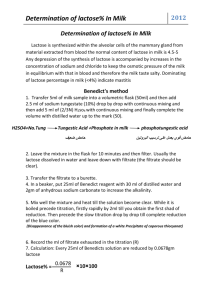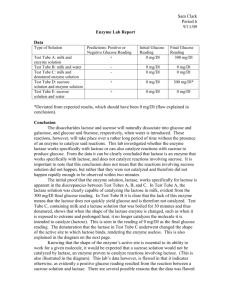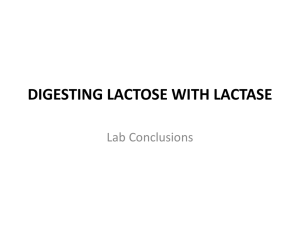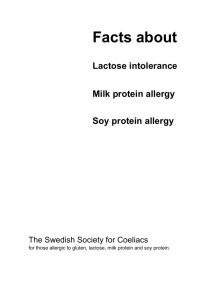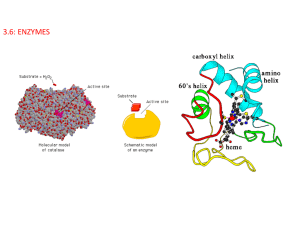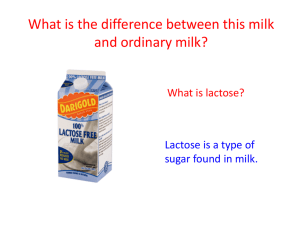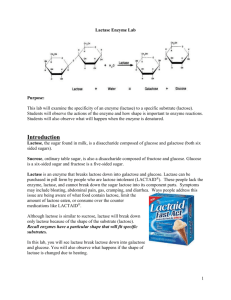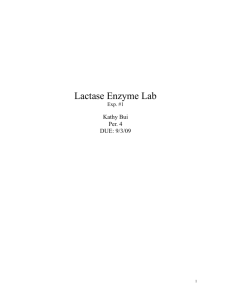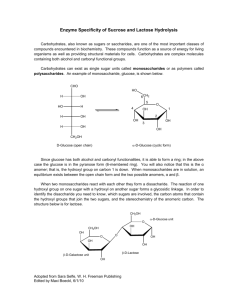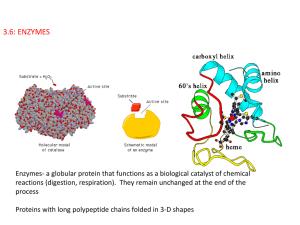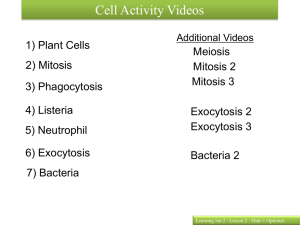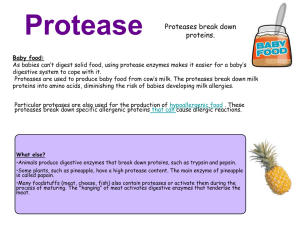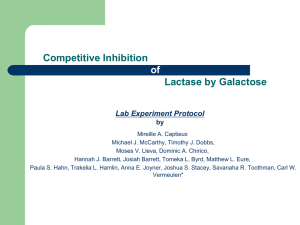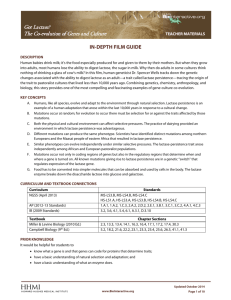File
advertisement
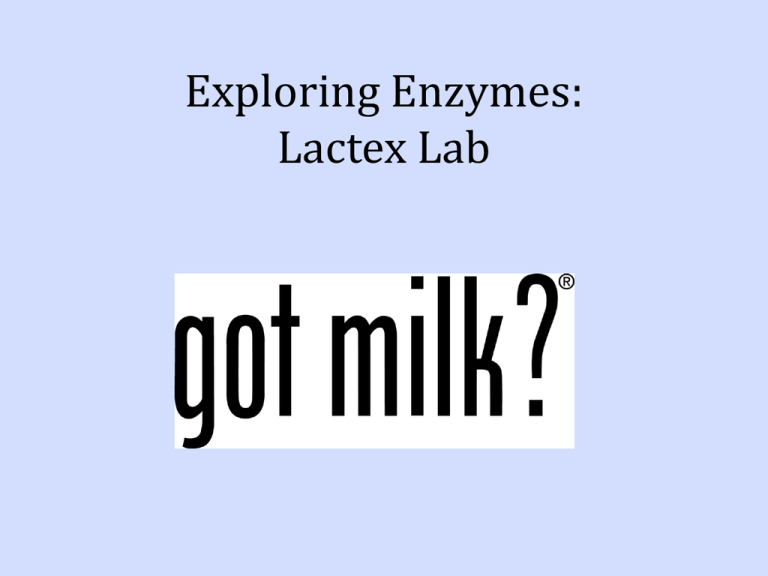
Exploring Enzymes: Lactex Lab Your Task: You are a scientist at a company called Pharmex. Recently a new treatment for lactose intolerance, Lactex®, has been developed. In order to verify the activity of Lactex®, the enzyme must be tested on different milks which contain sugars, to verify that it only works on lactose. If the enzyme has additional activities on other sugars, it may not be approved for use by the FDA. Four samples, each containing a different sugar, will be tested with Lactex. Your job is to determine if Lactex® is specific for the sugar lactose. Test Solutions: • • • • • Cow’s Milk: Lactose = Glucose-Galactose Soy Milk: Sucrose = Glucose-Fructose Maltose = Glucose-Glucose Rice Milk: Glucose Water What are Enzymes? • Proteins that catalyze (speed up) a biochemical reaction – Lower the amount of energy needed to start a reaction – Do not get used up as part of the reaction • Identified by their ‘ase’ Ending • Enzymes act upon substrates • Animation Lactase The sugar lactose is the substrate for the lactase enzyme: Given that other sugars have similar chemical structures, is lactose the only substrate for this enzyme??? Lactose Intolerance • Lack sufficient lactase enzyme Inability to digest lactose • - What causes lactose intolerance? Genetics Age Certain medications, infection Lactose Intolerance by Region http://4.bp.blogspot.com/_LH_BweOJx_E/TTmGnSwPwII/AAAAAAAAAGE/jNieRVTLbUQ/s1600/Lactose%2Bintolerance.png Most mammals normally become lactose intolerant after weaning. Some human populations have developed lactase persistence (in which lactase production continues into adulthood) resulting from a mutation that is postulated to have occurred 5,000-10,000 years ago, coinciding with the rise of cattle domestication. This mutation has allowed almost half of the world’s population to metabolize lactose without symptoms. This distribution is now thought to have been caused by recent natural selection favoring lactase persistent individuals in cultures that rely on on dairy products. (Source: Wikipedia) Materials • • • • • Cow’s milk - contains lactose Soy milk - contains sucrose Rice milk - contains glucose Maltose Distilled Water • Lactex Enzyme Solution – contains lactase enzyme • Glucose test strips Glucose Test Strips Read results at 30 Seconds. Record in % or mg/dL. Data Table Glucose Presence: Solution Before Enzyme Prediction / Actual After Enzyme Prediction / Cow Milk (lactose) / / Soy Milk (sucrose) / / Rice Milk (glucose) / / Maltose (optional) / / Distilled Water / / Discussion - What do you think will happen? Actual Procedure C S R W Cow Milk (lactose) Soy Milk (sucrose) Rice Milk (glucose) Water Step 1: Test for Glucose: Record Results in Data Table Glucose Test Strips Read results at 30 Seconds. Record in mg/dL. Procedure C S R Cow Milk (lactose) Soy Milk (sucrose) Rice Milk (glucose) Lacte x W Water Step 2: Add 0.5 ml lactase enzyme to each solution – swirl and wait 2 minutes Procedure C S R Cow Milk (lactose) Soy Milk (sucrose) Rice Milk (glucose) W Water Step 3: Test for Glucose again. Record Results in Data Table Glucose Test Strips Read results at 30 Seconds. Record in mg/dL. Conclusion Discuss your results with your lab partner, then as a class. Is the lactase enzyme specific for the sugar lactose? What evidence do you have to support this conclusion? Conclusion • Is the lactase enzyme specific for the sugar lactose? – Enzymes are specific for a given substrate. – Lactose is specific for the lactase sugar. • If your results do not support this conclusion, why might this be? Next Steps • How does the lactase enzyme function under different conditions? – pH – temperature

